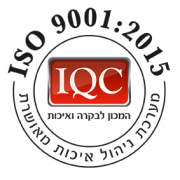By Vadim Berger, Sales CEO
In today’s fast-paced and highly competitive industrial landscape, maintaining high standards of quality control (QC) is no longer a choice but a necessity. The digital age has brought a revolution in how we approach QC, with innovative tools and methodologies transforming how businesses ensure that their products consistently meet or exceed expectations. As the Sales CEO of a company deeply involved in industrial automation, I have seen firsthand the immense benefits of integrating modern QC technologies into production processes.



The Evolution of Quality Control
Historically, quality control was often a manual, time-consuming process. It required meticulous inspection by trained personnel to detect flaws in materials, measurements, or the final product. However, this traditional method was prone to human error and inefficiency, particularly when scaling production or managing multiple product lines.
Enter digital transformation. The incorporation of advanced technologies like AI, machine learning, and IoT (Internet of Things) into quality control has redefined the way businesses approach manufacturing. This shift not only enhances precision but also allows for real-time monitoring and data-driven decision-making.
Digital Tools Revolutionizing Quality Control
The digital age offers a range of tools and systems that allow manufacturers to detect, analyze, and resolve quality issues faster than ever before. Here are some of the key technologies making an impact:
1. Automated Vision Systems
One of the most impactful innovations in QC is the use of automated vision systems. Companies like Baumer are leading this space with their smart vision sensors and cameras. Baumer’s vision sensors offer highly accurate inspection capabilities, detecting defects, and ensuring product uniformity in industries ranging from food processing to automotive manufacturing. By leveraging AI-powered algorithms, these systems allow manufacturers to identify minute defects with far greater speed and reliability than human inspectors.
2. IoT Sensors and Smart Manufacturing
The integration of IoT sensors into production lines enables real-time monitoring of machinery and product quality. These sensors can track variables such as temperature, pressure, and humidity, which directly affect product outcomes. By analyzing this data, companies can predict and prevent potential issues before they escalate. For example, a slight variation in temperature could indicate a machinery malfunction, allowing for proactive maintenance that reduces downtime and prevents substandard products from reaching the market.
3. Data Analytics and Predictive Quality Control
Data analytics is at the heart of modern QC strategies. With vast amounts of data generated by sensors and machines, predictive quality control systems use machine learning to identify patterns and predict potential defects. These systems not only help in understanding the root causes of quality issues but also in forecasting them. This allows companies to adjust processes dynamically, ensuring that production quality is consistently high.
4. Digital Twin Technology
Digital twin technology, which creates a virtual replica of the production process, enables companies to simulate and test scenarios without interrupting actual production. This digital representation allows manufacturers to test product designs, production changes, and quality control measures virtually, drastically reducing the time and cost associated with trial-and-error methods. By optimizing processes before implementation, businesses can maintain high levels of efficiency and product quality.
5. AI-Powered Quality Management Systems (QMS)
Artificial Intelligence (AI) is being increasingly used to streamline quality management systems. AI can assess massive datasets in seconds, flagging anomalies and patterns that may indicate quality issues. It also automates reporting and compliance tracking, reducing the time needed to meet regulatory standards. By integrating AI into QMS, businesses can ensure that their products are consistently compliant and meet both internal and external quality benchmarks.
The Impact of Digital QC on Production Standards
The incorporation of these digital tools into QC processes has profound effects on production quality. First and foremost, these tools allow for real-time monitoring, which means that any potential quality issues can be addressed before they result in costly recalls or production halts. Moreover, the use of predictive analytics helps companies prevent defects rather than just catching them after the fact.
Additionally, digital QC systems reduce human error, which is often one of the most significant sources of quality issues. Automating tasks like visual inspection or data collection means that businesses can focus on continuous improvement, knowing that their quality standards are being maintained by cutting-edge technology.
Looking Ahead: Continuous Innovation in QC
As digital tools continue to evolve, the future of quality control looks incredibly promising. Innovations such as 5G connectivity, augmented reality (AR), and blockchain will further enhance transparency, efficiency, and traceability in production processes. Manufacturers will be able to achieve unprecedented levels of precision, minimizing waste and optimizing resource use.
In conclusion, embracing digital tools for quality control is no longer an option but a competitive necessity. These technologies empower manufacturers to maintain high standards, reduce costs, and deliver superior products to market more quickly and reliably. As the industrial world continues to shift towards smart manufacturing, companies that leverage these innovations will undoubtedly lead the way in both productivity and quality excellence.




